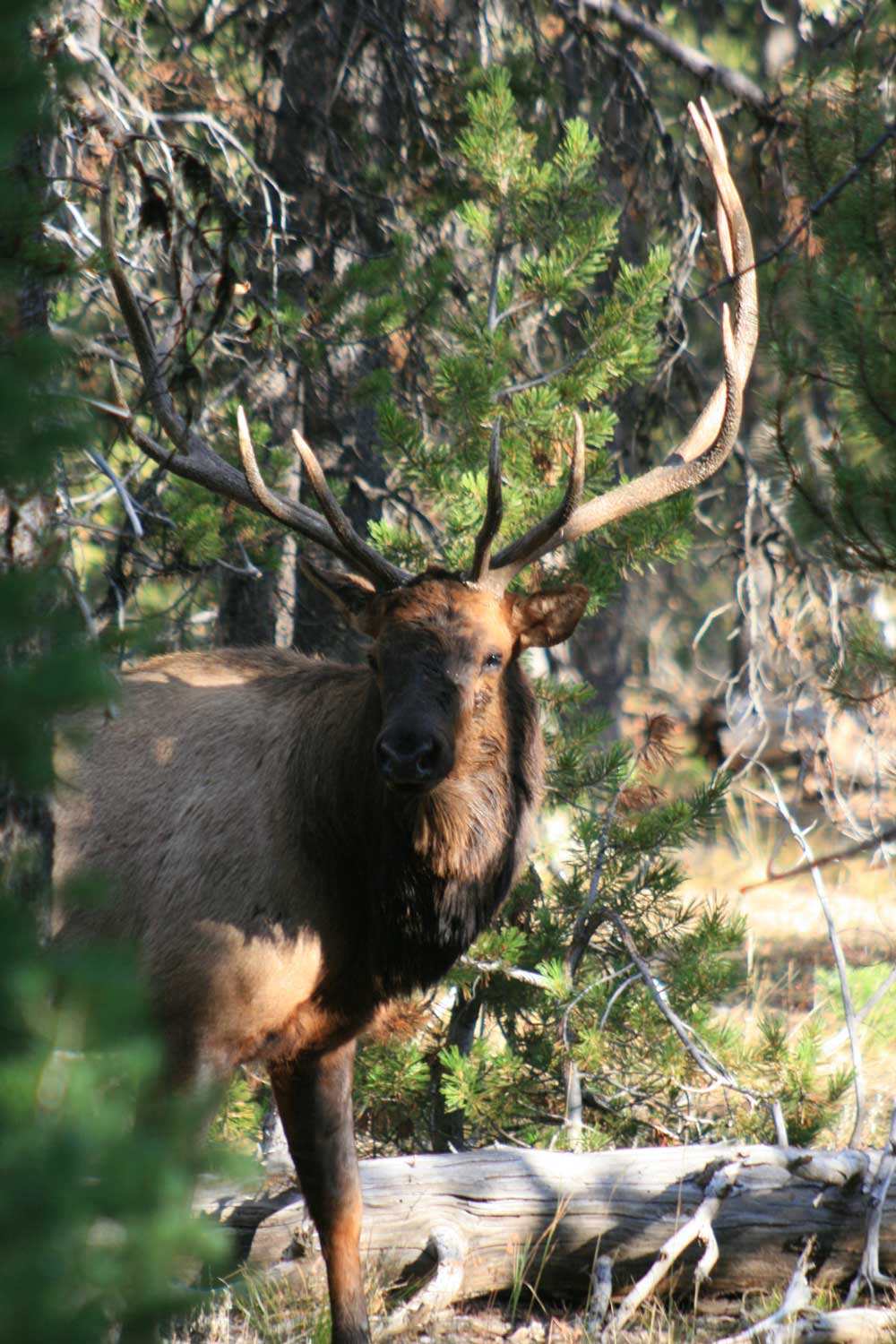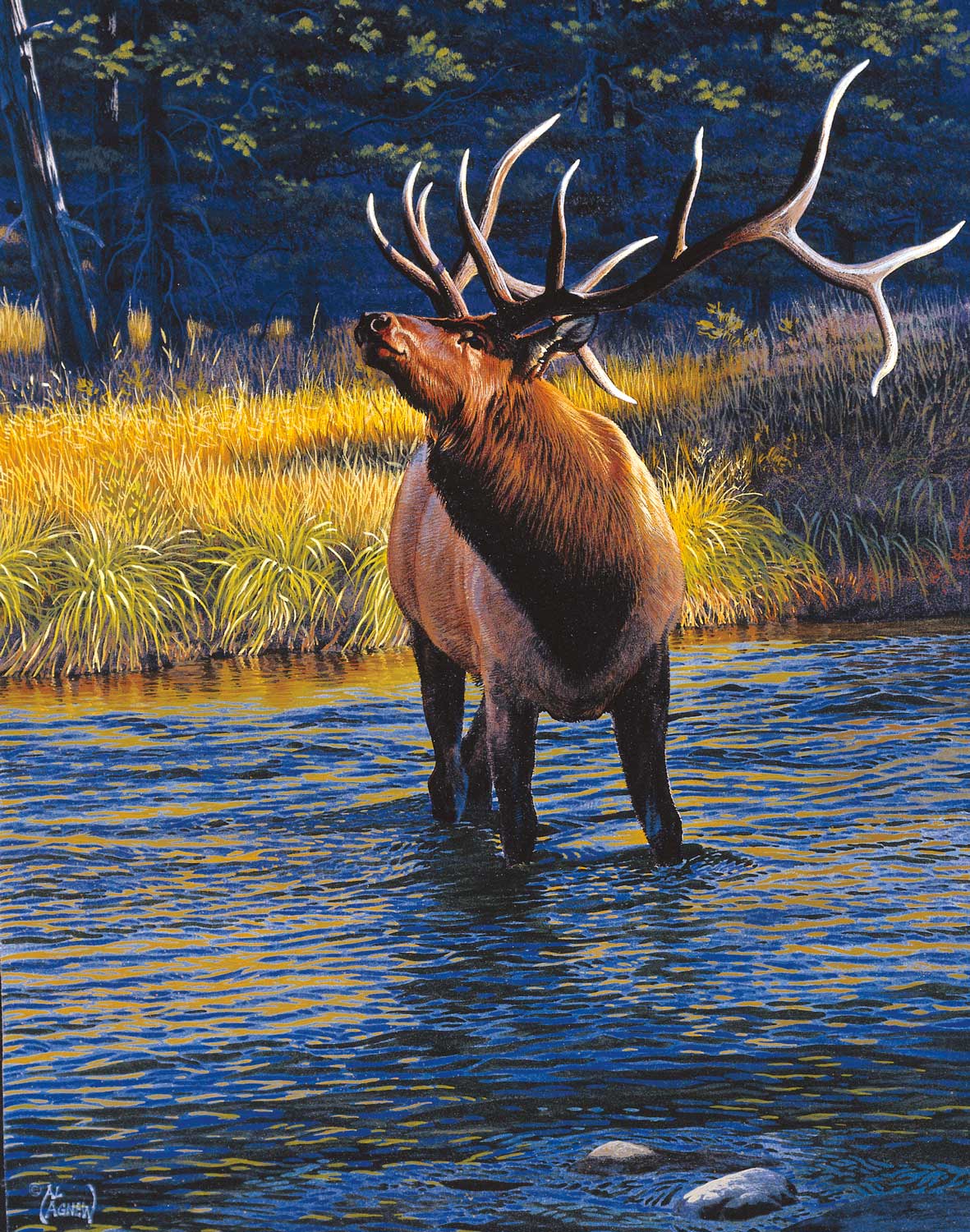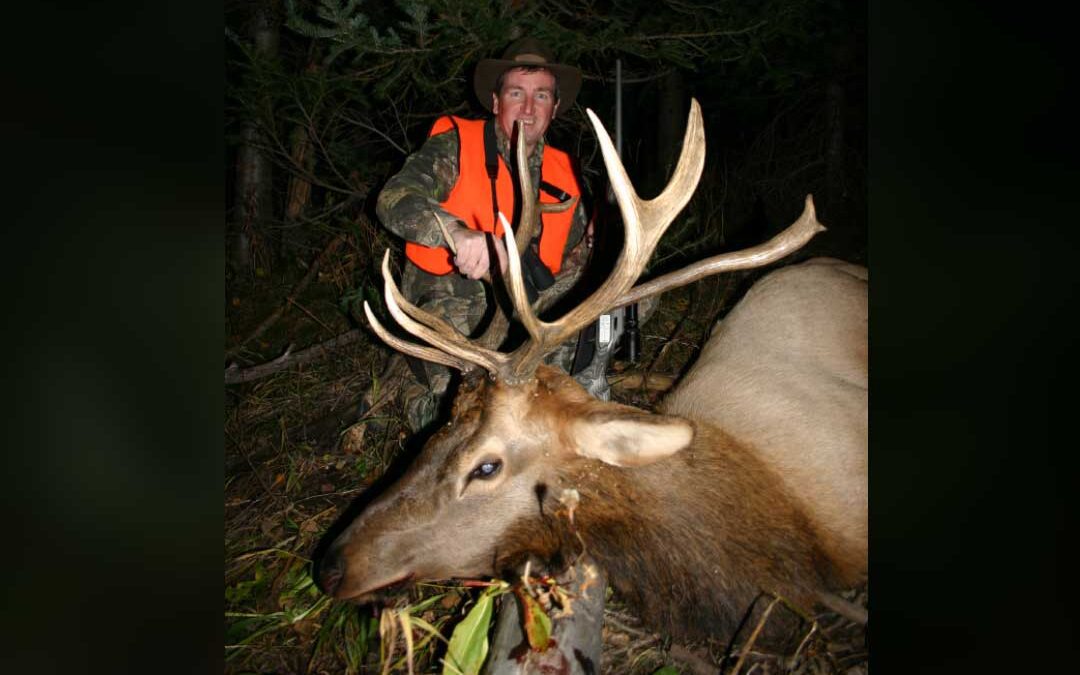While most elk hunting stories begin with vivid words about climbing steep and tall mountains, many long hours spent sitting glassing into timbers and then moving from location to location to glass into more brush—I missed all that effort and wasted time on one elk hunting adventure. Those typical elk hunting stories relate agonizing days spent searching desperately for an elk with nice antlers. Definitely not the way to describe my first elk hunt—period.
Instead, I arrived at the airport, drove directly to elk camp in about an hour, changed into my hunting clothes, checked my rifle zero and then hopped onto the back of a 4-wheeler behind my guide. I did, however, struggle with the barbed-wire fence gate that I had to open so we could pass through on our trip up the mountain.
Once we arrived at the mountain’s top, my guide began setting up a tripod for a spotting scope. I was looking about and spotted movement in the brush less than 100 yards down below us and on the side of the ridge ahead of us. That movement morphed into elk antlers thrashing the brush, and those antlers were equipped with many points. Game on!
OK, so now my elk hunting struggle began. I could not make a clean shot because of dense brush between the bull and me. Adding stress was that if the bull stopped thrashing and walked east, he’d instantly disappear into dense trees and be gone. I needed to act immediately.
The plan was to move over the ridge to a high knoll and better viewing location. As we went, I swear every snap of a twig sounded like a huge tree falling through the forest. Once we reached the site where I could see and shoot, the few minutes it took to clear an opening for a shooting lane seemed like an hour. It was showtime—and I had a direct line from the muzzle to the elk that was now out of the brush and standing in the open.

I chambered a round, set up shooting sticks and got steady and ready. When I filled my riflescope’s view with elk chest and pulled the trigger, the rifle barked and the elk wildly dashed uphill. It was actually running nearer to us. As I chambered another round, the bull dropped out of sight into brush about 50 yards away—and much closer to the 4-wheeler. Wow, elk hunting is a breeze, I thought. This elk definitely had been taken on Easy Street!
Yes, I was obviously lucky that time, but I will dance with Lady Luck any time she extends her hand to me. More so when elk hunting.
While my actual elk “hunting” time—from changing clothes to taking the shot—was about 15 to 20 minutes total, the real work, as with all elk hunts, begins after the shot. This was the first time I had been very close to an elk on the ground, and I soon saw how much bigger they are than a whitetail deer. It’s a back-breaking task of gutting, quartering, packing and securing meat to the 4-wheeler racks. Just moving an elk to complete the work is a struggle. No joking, elk hunting turns to real work when you get an elk on the ground.
On my multi-day Colorado elk hunt with a rifle, I was the first in camp to fill my tag. The other hunters all had tales of struggling and climbing to reach high mountain tops, agonizing time spent glassing for elk and long walks back to their vehicles in the dark. Ugh. That’s the way most elk hunts play out. I knew I was lucky—very lucky.
Another Easy Elk—Nearly
The next morning, I was partnered up with another elk hunter. In the pre-dawn darkness, we climbed a steep mountain to the top, glassed over distant mountainsides and completed all the typical elk hunting rituals. It was minutes after dawn, and I was in for a long day of hunting, but Lady Luck extended her hand—again.
I heard an elk bugling nearby and a quick scan of the mountainside east of our location revealed antler tips in the brush line. That bull was about 500 yards away and unaware of us. It was time to move because I could also see there were many elk over there. I noted where the herd was moving and headed into the valley ahead of us. We would lose sight of them in the timber as they moved.

Bulging Elk by Al Agnew.
The other hunter and I ran to a knoll just as elk began dashing through an opening in the valley about 100 yards below us. I don’t believe any of the elk saw us, they were just on the move like elk are prone to do. It was a train of elk on parade.
The hunter beside me sat down and raised his rifle. He had not seen the big bull, and he wanted to shoot several smaller bulls that came through the opening below us. It was a gamble, but I told him he should wait, a bigger bull was sure to come along as the elk herd passed by. About 50 elk passed through the small opening, and then the train of elk ceased. Just when I thought we had lost our gamble on letting those smaller bulls pass, the much bigger bull stepped into the opening. Yes, that hunter also bagged his elk. His hunt had taken about 45 minutes to complete. Another Easy Street elk.
No other hunters came back to the tent camp for lunch that day, so I spent the afternoon fly-fishing on a nearby river and occasionally glassing on the nearby mountains for elk. That night when some other hunters arrived in camp and heard about our success and another quick-and-easy elk hunt, they lined up to go hunting with me.
Elk Camp Insight
This was my first elk hunt, and I learned a lot about elk, elk camps and the hunters who hang out there. I know that in most hunting camps there is pressure until you get an animal, with some of that pressure coming from within.
As a novice and hunter who had never spent time in elk country, I had never seen an elk wallow, and had never heard an elk bugle in the real world—only in videos. I was amazed at how fast elk moved, and how easily they moved through dense brush. Another lesson was those big bulls you see standing broadside in the wide open—as seen on wall calendars—don’t exist in the real elk world. I only saw parts of elk much of the time I was out in the forest.
Elk hunters tend to be different than deer and upland hunters. They are more cordial—maybe because they are tired. Elk hunting means climbing hills and mountains, so at the end of the day, elk hunters are too tired to be anything but nice—they are too worn down to be grumpy or argue. Maybe the wall tent, sleeping on a cot, smell of smoke from the small wood stove and the aroma of camp meals make most elk hunters more cordial.
My very real lesson was once an elk is on the ground, a lot of work begins. While you can easily slip a bird into a hunting vest pouch or gut a deer and drag it to your vehicle and load it by yourself most of the time without great effort, moving an elk means getting help or cutting the big piece into many small pieces. I was glad my short introduction to elk hunting put a lot of meat in my freezer—a bonus for sure.
Since then I have jumped at every invitation to head to elk camp. There’s no place like it.

